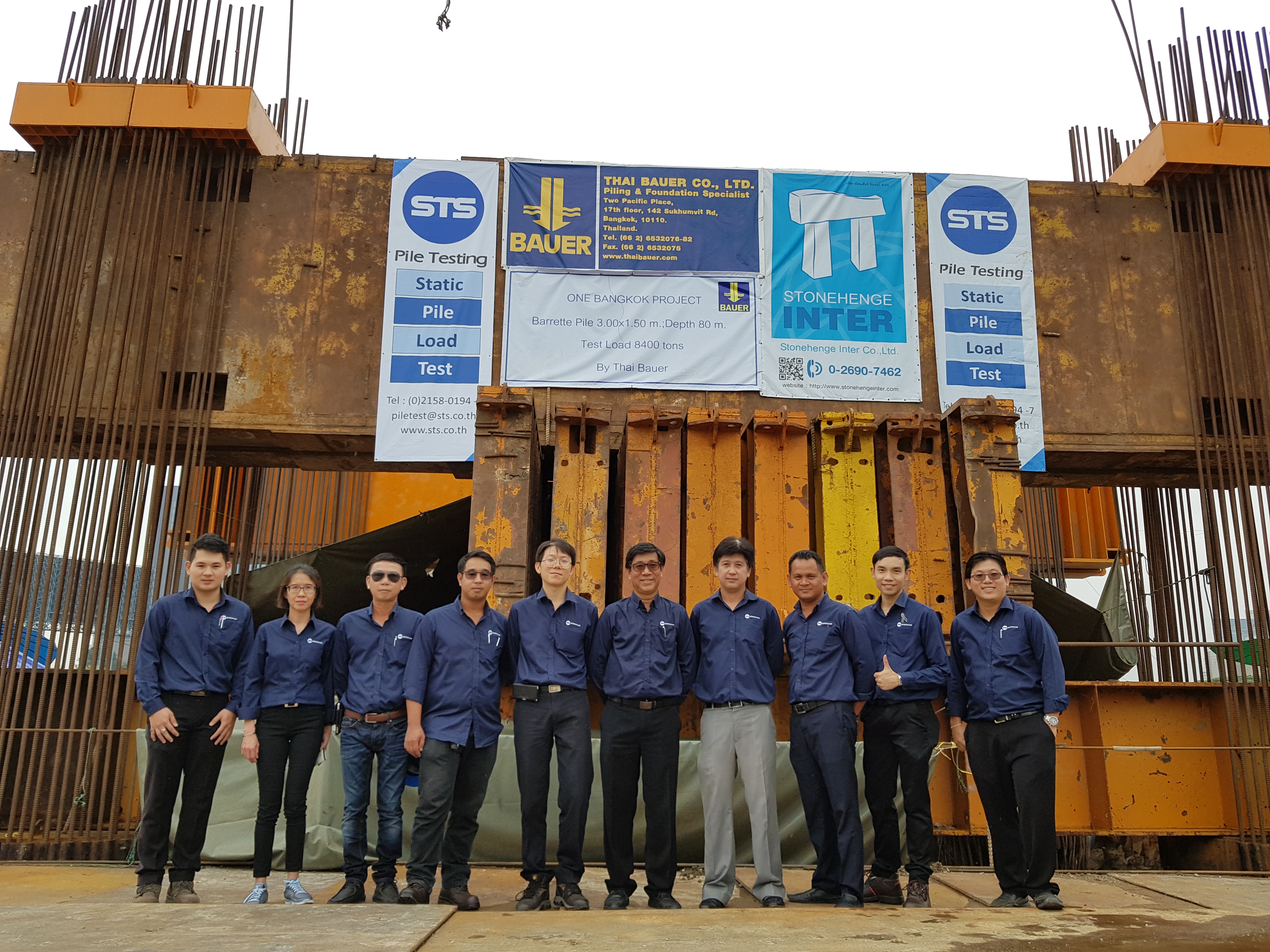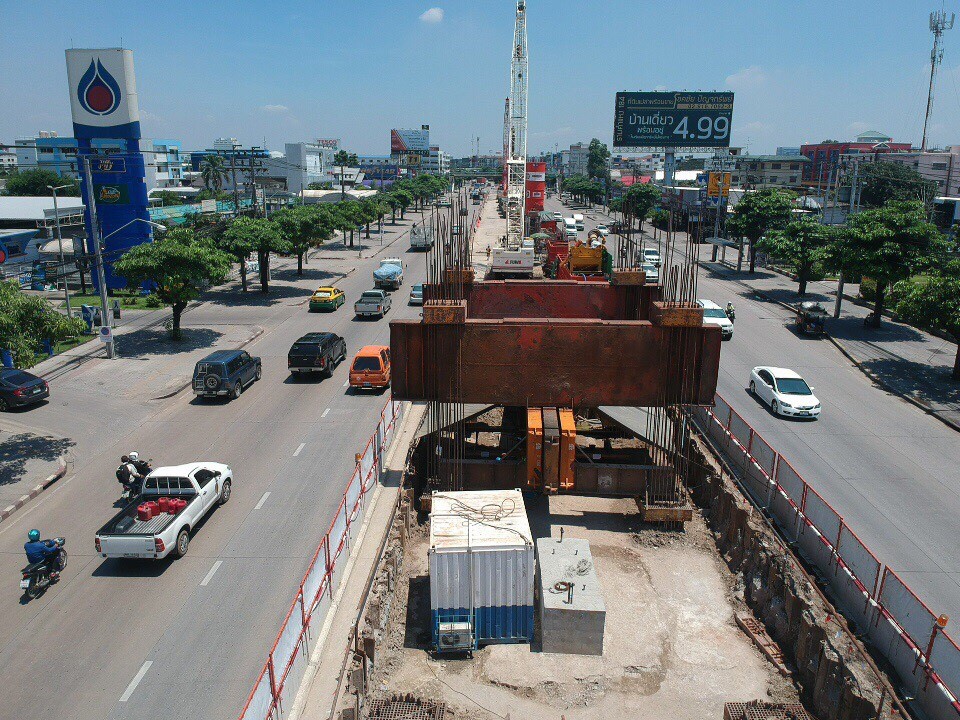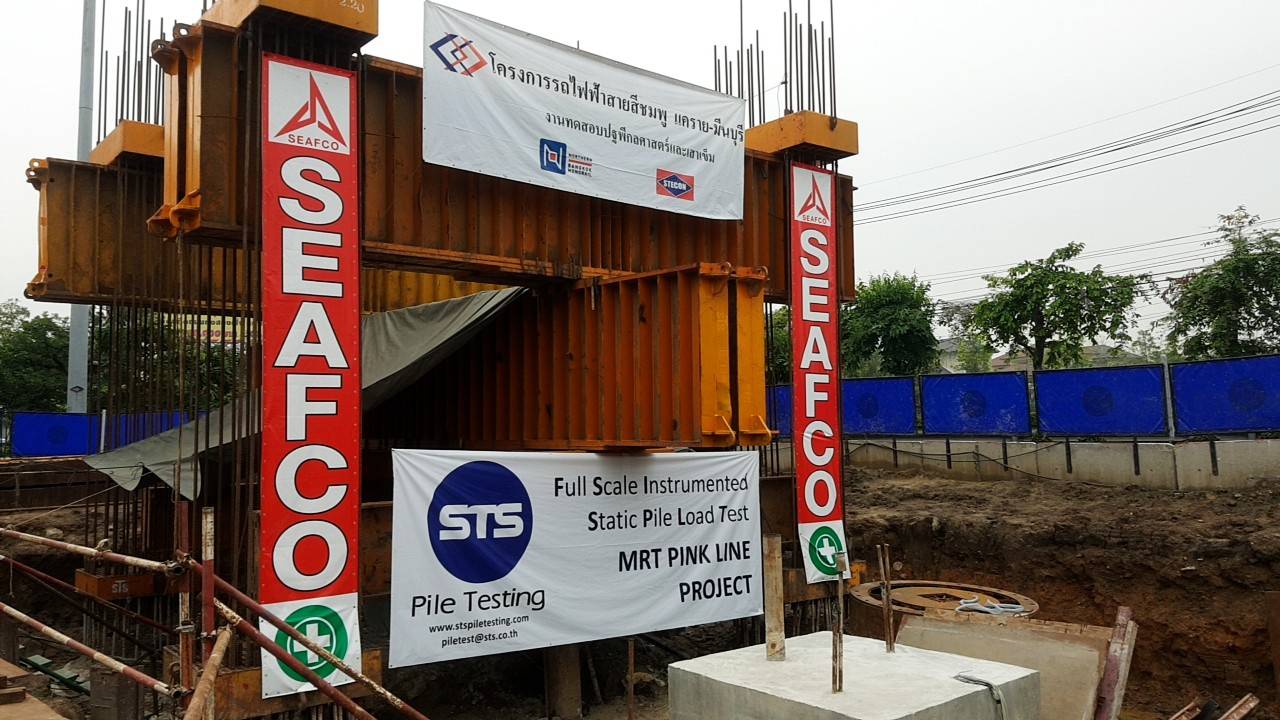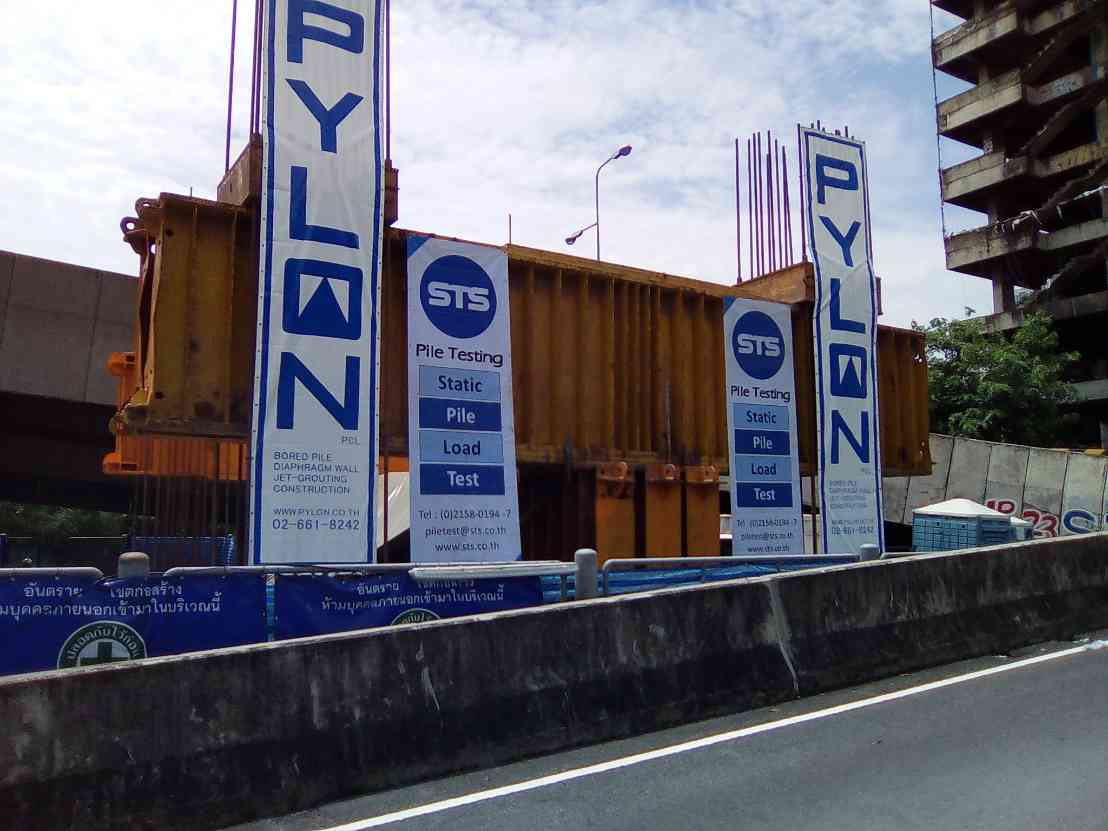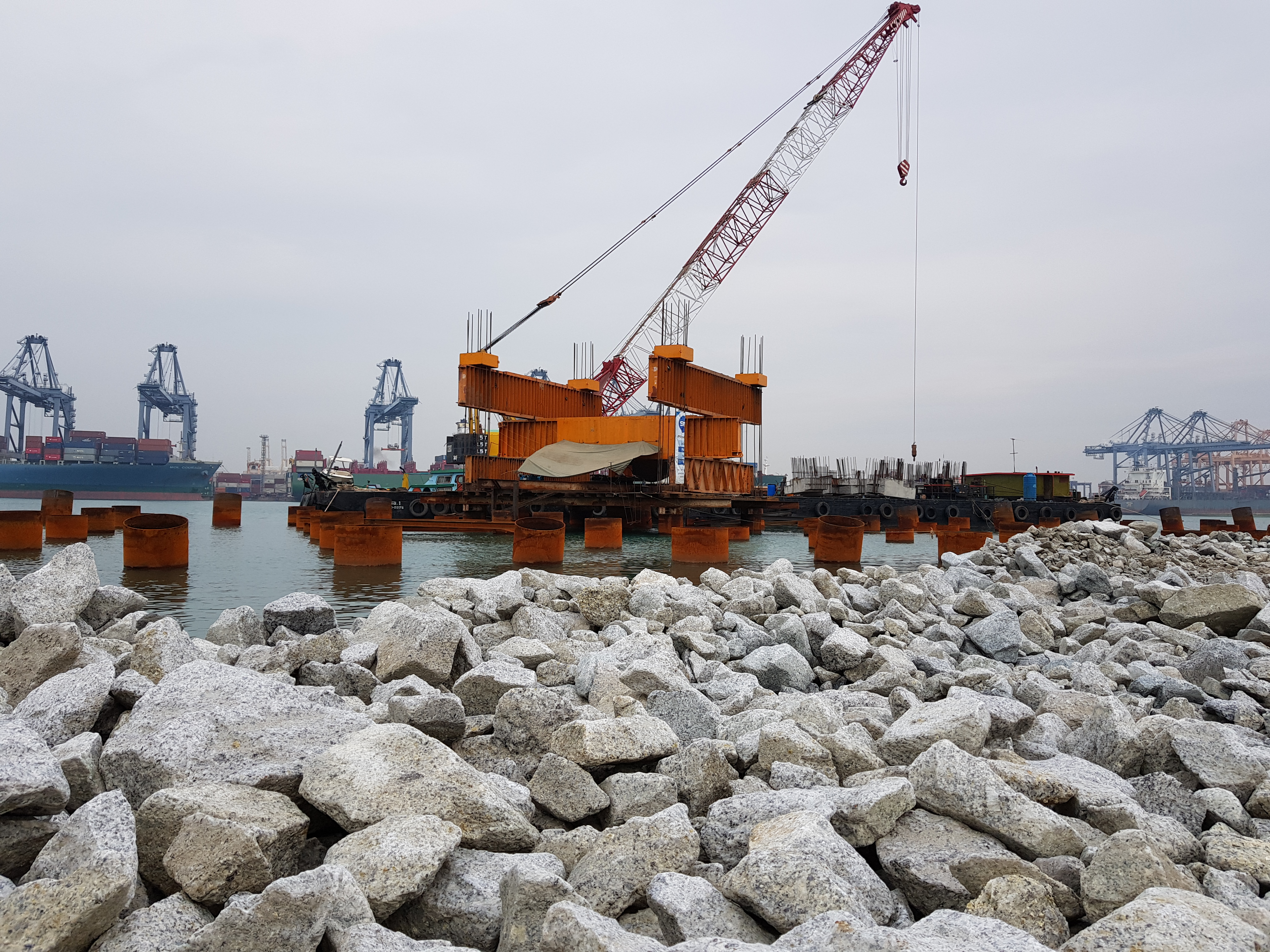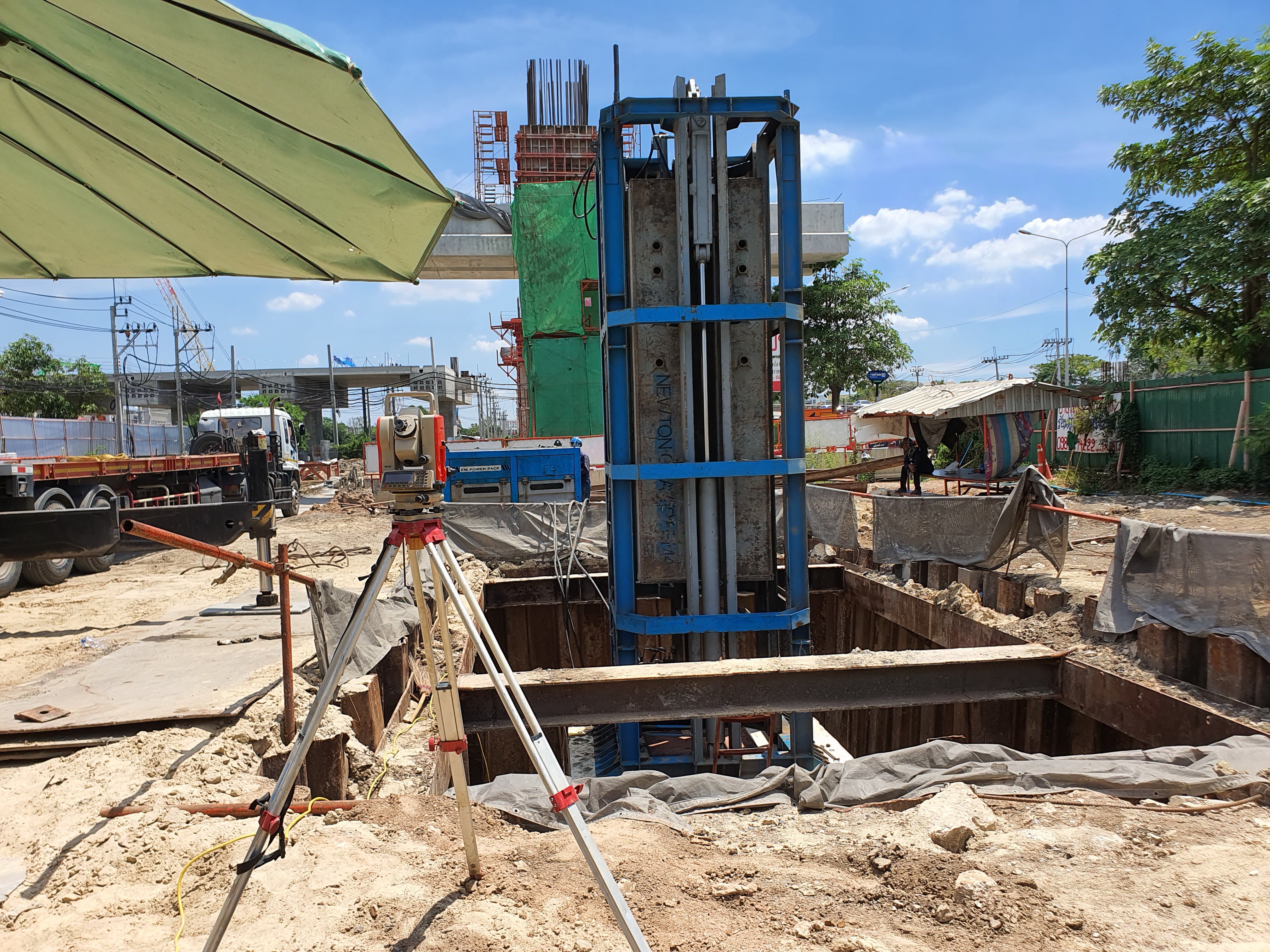- Static Pile Load Test
- High Strain Dynamic Pile Load Test
- Bi-Direction Test
Static Pile Load Test
Full-scale static loading, conformed by ASTM D1143, is a widely accepted test method for authoritative assessment of deep foundation. Testing is typically performed once, and the result is considered the definitive answer regarding the pile’s load bearing capacity. The static pile load test is the most common method of testing the capacity of a pile and it is also considered to be the best measure of foundation suitability to resist anticipated design loads. The static load test involves the direct measurement of pile head displacement in the response to a physically applied test load. This test provides very reliable data for pile capacity. This method is applicable to all kind of pile types, over land or over water, and may be carried out on either production piles or test piles. Test piles are specifically constructed for the purpose of carrying out load tests and therefore, are commonly loaded to failure. Testing of production piles however, is limited to prove that a pile will perform satisfactorily at the serviceability or design load, plus an overload to demonstrate that the pile has some reserve capacity. Furthermore installed and measured instrumentation in to the test pile such as strain gauge, fiber optic and extensometer can available to determine the soil parameters in order to verify and optimize the design of the foundation for a structure.
High Strain Dynamic Pile Load Test
High strain dynamic testing is a method of testing deep foundation to obtain information about their capacity and integrity, and in some cases, to monitor their installation. It is codified by ASTM D4945 Standard Test Method for High-Strain Dynamic Testing of Piles. High strain dynamic testing is called dynamic pile monitoring when it is applied during pile driving and dynamic load testing when it is applied following pile installation, regardless of the installation method. High strain dynamic testing consists of estimating soil resistance and its distribution from force and velocity measurements obtained near the top of a foundation impacted by a hammer or drop weight. The impact produces a compressive wave that travels down the shaft of the foundation. A pair of strain transducers obtains the signals necessary to compute force, while measurements from a pair of accelerometers are integrated to yield velocity. These sensors are connected to an instrument (such as a pile driving analyzer), that records, processes and displays data and results.
Bi-Direction Test
Bi-directional static loading test adopting load cells is widely used around the world at present, with increase in diameter and length of deep foundations. The BDSLT method of pile load test utilizes hydraulically operated Cells embedded inside the concrete of the pile. The embedded load cell is specially designed using built in hydraulic jacks. Pressure is applied to the load cell by hydraulic pump on the ground through the flexible hose embedded into the pile. The pressure in the load cell is measured by pressure transducer and the displacements are measured by displacement transducers which are connected to the load cell by telltale rod embedded into the pile. When loaded the load cell expands, pushing the upper shaft upwards and the lower shaft downwards, which would mobilize the side resistance and base resistance of the upper and lower lengths of the pile. According to relationship between the movements, bearing capacities of both upper and lower portion of the pile can be determined. Adding up the modified side resistance of upward pile shaft and the base resistance of downward pile shaft makes up the total ultimate bearing capacity of the pile.




